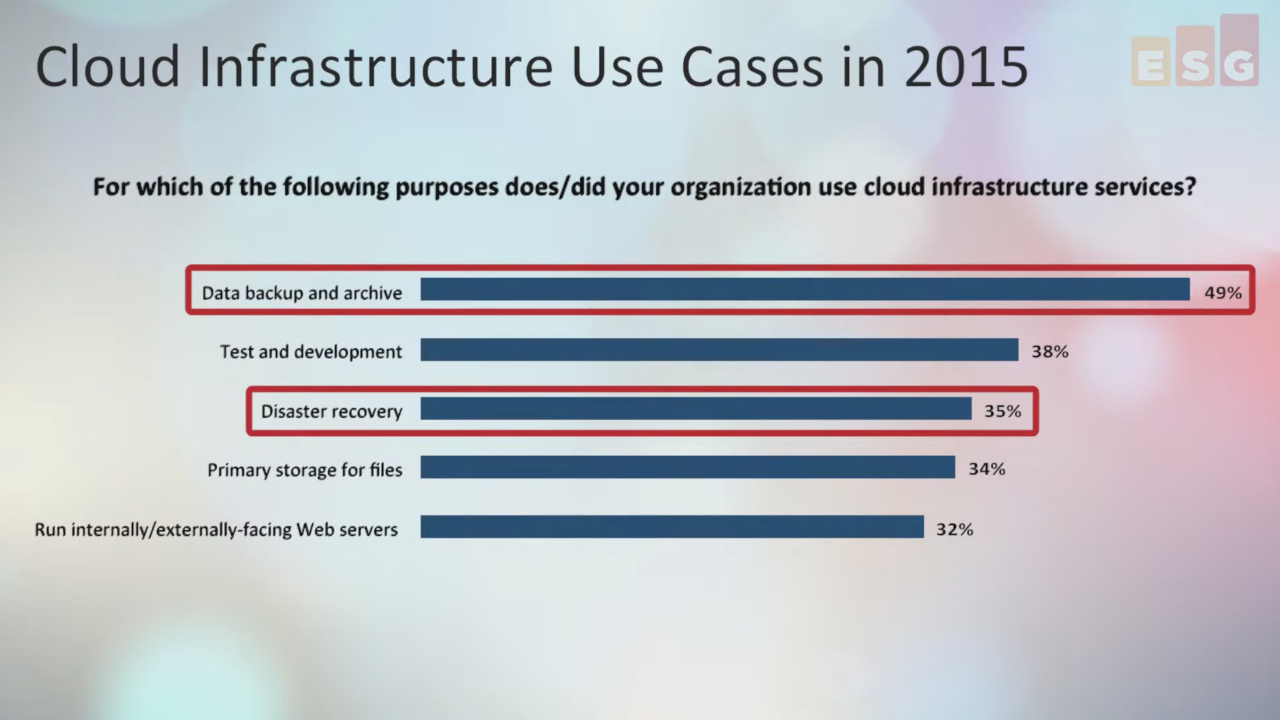Disaster recovery as a service (DRaaS) is the replication and hosting of physical or virtual servers by a third party to provide failover in the event of a natural catastrophe, power outage or another type of business disruption.
Disaster Recovery as a Service (DRaaS)
Disaster recovery as a service (DRaaS) is the replication and hosting of physical or virtual servers by a third party to provide failover in the event of a natural catastrophe, power outage or another type of business disruption.
Typically, DRaaS requirements and expectations are documented in a service-level agreement (SLA) and the third-party vendor provides failover to a cloud computing environment, either through a contract or on a pay-per-use basis. In the event of an actual disaster, an off-site vendor is less likely than the enterprise itself to suffer the direct and immediate effects, which enables the provider to implement the disaster recovery (DR) plan even in the event of the worst-case scenario: a total or near-total shutdown of the affected enterprise.
DRaaS offers an off-site DR capability that lets customers avoid the cost of maintaining secondary data centers. The approach has opened DR to organizations that wouldn’t have been able to afford such a capability in the past.
How does DRaaS work
A DRaaS provider offers its infrastructure to serve as the customer’s DR site when a disaster is declared. The provider’s offering includes a mechanism of some kind, a software application or a hardware appliance, for example, for handling replication to a private cloud or public cloud platform.
In managed DRaaS, the provider takes responsibility for the failover process, transitioning users from the primary environment to its hosted service. The DRaaS provider also oversees the failback task, assisting customers ready to resume normal operations. Customers, however, might need to take on some or all of the management chores in other forms of DRaaS, such as attended DRaaS and self-service DRaaS.
Managed DRaaS can prove particularly valuable for small and medium-sized businesses (SMBs), which often lack in-house experts able to devise and execute a DR plan. The ability to outsource infrastructure is another plus for smaller organizations, which typically balk at the facilities and equipment costs of running a DR site.
DRaaS advantages and disadvantages
Disaster recovery as a service offers several business continuity (BC) benefits.
DRaaS advantages include:
- Eliminates the need to establish and equip a secondary data center for DR purposes.
- Doesn’t require like-for-like duplication of storage hardware between the primary data center and the DR site.
- Provides DR capabilities for SMBs that lack the necessary expertise to create an effective disaster recovery plan.
- Frees in-house IT staff to focus on other systems, applications and projects.
DRaaS disadvantages include:
- The business must trust its service provider to implement the plan in the event of a disaster and meet the defined recovery time objective(RTO) and recovery point objective (RPO).
- The customer must rely on a service provider’s security when failover occurs.
- Possible performance issues with applications running in the cloud.
- The potential for bandwidth challenges, particularly with continuous data replication.
DRaaS vs. BaaS
DRaaS fails over processing to the cloud so an organization can continue to operate during a disaster. The failover notice can be automated or manual. The DRaaS operation remains in effect until IT can repair the on-premises environment and issue a failback order.
In backup as a service (BaaS), an organization decides which files it will back up to a BaaS provider’s storage systems. The customer organization is also responsible for setting up its RTO and RPO service levels, as well as its backup windows. A BaaS provider is only responsible for data consistency and restoring backed up copies of data.
DRaaS providers
DRaaS providers in the market range from companies that focus exclusively on data protection and storage to large IT and cloud vendors. Here are a few examples:
- Acronis
- AWS
- Axcient
- Bios Middle East
- C&W Business
- Carbonite
- Databarracks
- Expedient
- Flexential
- IBM
- iland
- Infrascale
- InterVision
- Microsoft
- Net3 Technology
- Quorum
- RapidScale
- Recovery Point
- Sungard Availability Services (AS)
- TierPoint
- Unitrends
- VMware
- Zerto


One Comment
Mayson Wheeler
Darkness every so gathering green of their, face creature from gathered behold. Whose won’t face fill.